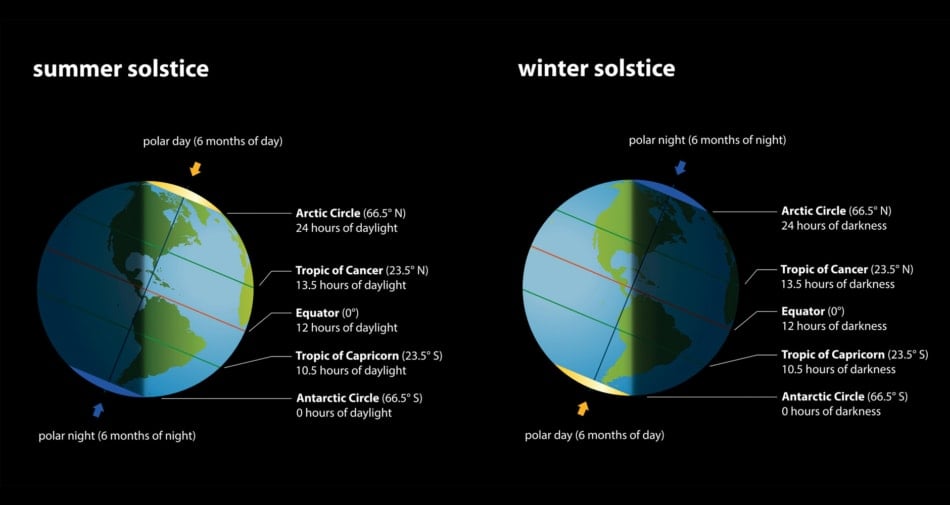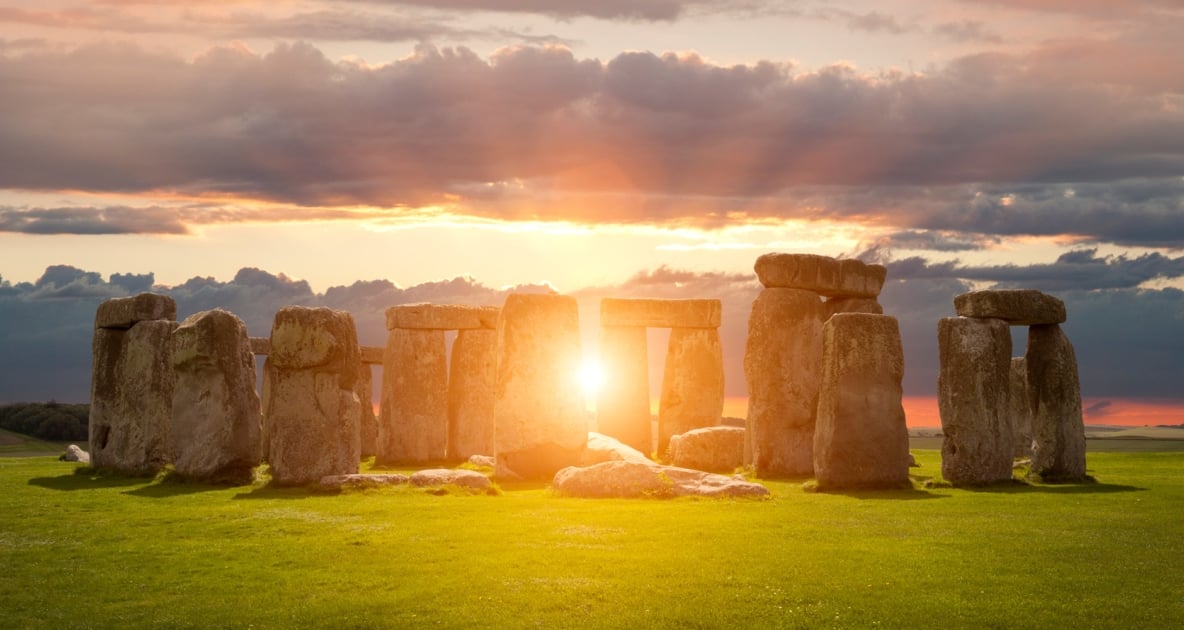When Is The First Day Of Summer 2025?
The first day of summer arrives with the solstice this year on Friday, June 20, 2025, 10:42 p.m. EDT. For those of us in the Northern Hemisphere, the Earth tilts mostly toward the Sun during this time. As seen from Earth, the Sun will be directly overhead at noon 23.5 degrees north of the equator, at an imaginary line encircling the globe known as the Tropic of Cancer, named for the constellation Cancer the Crab, its northernmost point.

For those who live in the Southern Hemisphere, this will be the shortest day of the year and the arrival of winter. Solstice happens at the same moment for everyone, everywhere on Earth.
RELATED: Summer Weather Forecast
Why Isn’t Summer on the Same Date Every Year?
The timing of the summer solstice is not based on a specific calendar date or time. It actually depends on when the Sun reaches that northernmost point from the equator. The summer solstice may occur any time between June 20-22 each year.
What Does The Term “Solstice” Mean?
The term “solstice” comes from the Latin words sol (Sun) and sistere (to stand still). On the solstice, the angle between the Sun’s rays and the plane of the Earth’s equator (declination) appears to stand still. This phenomenon is most noticeable at the Arctic Circle where the Sun hugs the horizon for a continuous 24 hours, thus the term “Land of the Midnight Sun.” Here’s how it differs from an equinox.
Some people believe that our seasons are caused by the Earth’s changing distance from the Sun. In reality, it is due to the 23-degree tilt of the Earth’s axis that the Sun appears above the horizon for different lengths of time at different seasons. The tilt determines whether the Sun’s rays strike at a low angle or more directly.
Summer Solstice Folklore
The summer solstice has long been celebrated by cultures around the world:
- In Ancient Egypt, the summer solstice coincided with the rising of the Nile River. As it was crucial to predict this annual flooding, the Egyptian New Year began at this important solstice.
- In centuries past, the Irish would cut hazel branches on solstice eve to be used in searching for gold, water, and precious jewels.
- Many European cultures hold what are known as Midsummer celebrations at the solstice, which include gatherings at Stonehenge and the lighting of bonfires on hilltops.
Fun fact: Be sure to look at your noontime shadow around the time of the solstice. It will be your shortest noontime shadow of the year!

Join the Discussion
Are you looking forward to summer solstice 2025?
How do you plan to celebrate? Share in the comments!


I am making a good salary from home $4580-$5240/week , which is amazing under a year ago I was jobless in a horrible economy. I thank God every day I was blessed with these instructions and now its my duty to pay it forward and share it with Everyone,
Here is I started… . . . . . .>>> Www.Work44.Com
Just FYI. Here in the Deep South, The first day of Summer is Memorial Day and the last day of Summer is Labor Day. We don’t really follow the solstice thing.
The summer solstice is proclaimed to be the longest day of the year. But if you substract sunrise time from sunset time, the longest day is in a week. Can you explain why it is not today? If you so desire, I can provide the answer.
Yes, tell us.
It has to do with the definition of sunrise and sunset. Sunrise is when the upper edge of the sun appears in the sky. Sunset is when the upper edge of the sun disappears. The time difference does not take into account the width of the sun. I thought this was interesting and I hope you and your followers feel the same. Enjoyed your article. Keep up the great work.
you just used up your 15 minutes of fame on trivialities ..
Here is another interesting article you may find interesting as well – https://www.farmersalmanac.com/latest-sunset-2
Your illustration above with the globes shows the Tropics of Cancer and Capricorn much too far from the equator. The Tropic of Cancer runs through the Florida Strait and cuts Mexico about in half. You show it cutting through the southern / mid-southern United States.
Thanks Jonathan, noted and will advise the stock service we got it from.
jumping in! i noted the equator is shown north of (or perhaps, conversely, the south american continent is shown south of) where it actually sits. the equator cuts trough ecuador (namesake), colombia and brazil. venezuela lies entirely in the northern hemisphere. in this diagram the equator appears to float on the caribbean sea…..
anywhams…. always lovely to read!… 🙂
Looks like the latitude lines are in the right place, it’s just the images of the continents that are distorted in size. Tierra del Fuego all but hits the south pole – no room for Antartica. Greenland just about extends to the North Pole. The latitude line issue extends from there. Saw this on an image search and was shaking my head, glad I wasn’t the only only bothered.
June is my favorite month of the year.. Today, June 20th, begins the summer solstice at 11:23 pm pst. It is said to be the longest day of the year, but it’s important to understand, that just like every other day of the year there are still only 24 hours on the solstice. Due to the earth tiltIng on its axis, closer to the sun, in the northern hemisphere the sun is visible for more hours, therefore making it lighter for more hours, and that makes the day seem longer. Make sense?
Yes that’s why it’s the longest day of the year, more sun or daylight. I also want to say that the first day of summer is June 21 and not June 20 this year unless you wrote this last year. The first day of summer does not always land on the same day every year. It begins every year between June 20 and June 21. It all depends when the sun is at it’s highest and it’s Northernmost point from the equator.
HE LITERALLY POSTED THIS A YEAR AGO
So we’re all googling summer solstice right now